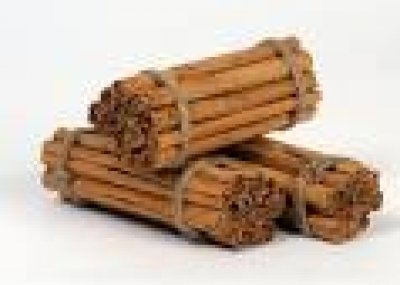Cinnamon
Cinnamon is the dried inner bark of various evergreen trees belonging to the genus Cinnamomum. Cinnamon has been used as a medicine and spice for over 5,000 years. Early Egyptians used it in their embalming mixtures. Egyptians imported it from China in 2000 BC. In the Middle Ages, the source of Cinnamon was a mystery to the western world. Portuguese traders finally discovered Cinnamon in Sri Lanka and at the end of the fifteen-century restructured the traditional production of Cinnamon.  The Dutch captured Sri Lanka in 1636 and established a system of cultivation that exists to this day. It has a warm and aromatic flavor and fragrance is sweet and woody in both ground and stick forms. The commercial Cinnamon bark is the dried inner bark of the shoots. Both the bark and leaves are aromatic. True Cinnamon is native to Sri Lanka. The Cinnamon used in North America is from the Cassia tree, which is grown in Vietnam, China, Indonesia and Central America.
The Dutch captured Sri Lanka in 1636 and established a system of cultivation that exists to this day. It has a warm and aromatic flavor and fragrance is sweet and woody in both ground and stick forms. The commercial Cinnamon bark is the dried inner bark of the shoots. Both the bark and leaves are aromatic. True Cinnamon is native to Sri Lanka. The Cinnamon used in North America is from the Cassia tree, which is grown in Vietnam, China, Indonesia and Central America.
Research shows that Cinnamon can aid the body in using insulin more efficiently. This spice also relieves nausea, diarrhea, and eliminates gas. It has warming effects on the body, enhances digestion, and increases the metabolism of fats. This spice can help reduce fevers and relieve congestion. Cinnamon is also used in treating diabetes, weight loss, yeast infection, and uterine hemorrhaging. Studies done by Japanese researchers shows that Cinnamon contains a substance that is both anti fungal and anti bacterial.
The Germany Commission E has this to say about Cinnamon and Chinese Cinnamon: Used for loss of appetite, dyspeptic complaints such as mild, spastic condition of the gastrointestinal tract, bloating, and flatulence.